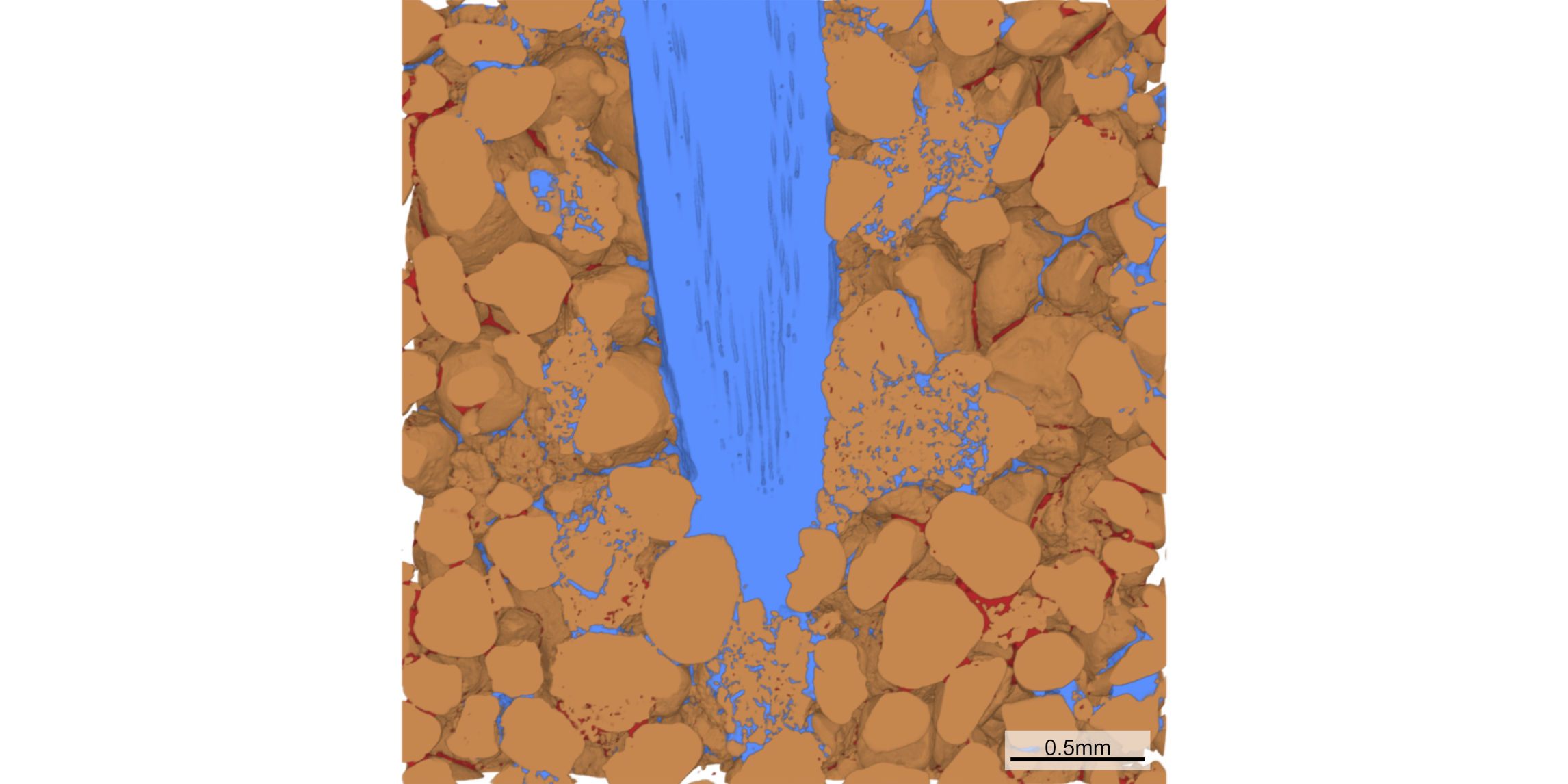Liquid Rhizosphere Architecture
Distribution and retention of liquid in soil biological hotspots
Life residing in the porous environment of soil has to face many challenges. A major challenge encountered by plant roots and microorganisms are fluctuations in soil moisture and its implications. While soil drying is accompanied by a fragmentation of the liquid phase soil rewetting causes a fragmentation of the gas phase. Both processes lead to severe alterations of local transport properties. The distribution and connectivity of the soil solution and how it is affected by variations in soil moisture and soil water potential defines the "liquid architecture" encountered by life in soil. In order to avoid the disadvantageous effects of such oscillations and optimize growth conditions, plants as well as microorganisms engineer their fluid surroundings.
Plants, bacteria, and fungi can alter the properties of the soil solution by releasing extracellular polymeric substances (EPS). These highly polymeric blends are as diverse as their constituents are numerous, yet EPS alter the liquid phase in similar ways. They increase the viscosity of soil water, by that helping to maintain its connectedness in drying soil and in turn improve water flow and solute diffusion. At the same time, while improving the connectivity of liquid the EPS polymer network retains water in these regions due to its hygroscopic nature. Furthermore, EPS can retain nutrients and enzymes, reduce soil water evaporation, improve the desiccation resistance of bacteria, facilitate root penetration, enhance soil stability and much more. The engineering of the soil solution is most prominent in regions of high biological activity, like in soil biocrust or the within the thin layer of soil around the roots, the rhizosphere.
We aim to understand how and to which degree plants and bacteria are capable to modify the liquid architecture of the rhizosphere and by that modify its transport properties. To do so, we use different methods ranging from light microscopy to X-ray computed tomography to resolve the spatial and temporal distribution of the liquid phase within the rhizosphere and other biological hotspots.
Contact: Pascal Benard ()
